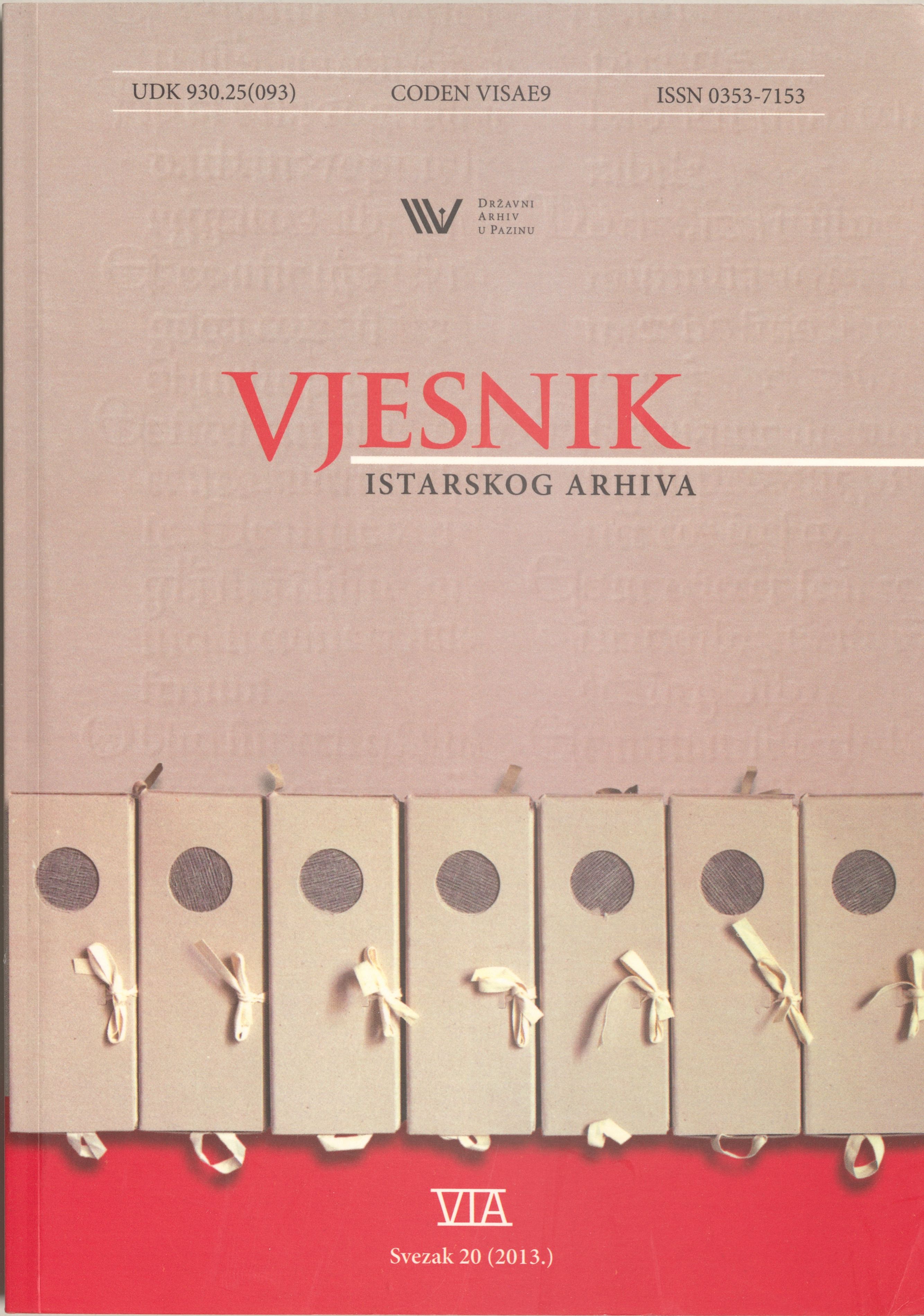Demographic analysis of data obtained from registers of baptisms and weddings of the Parish of Svetvinčenat (1875 – 1900)
Keywords:
Parish of Svetvinčenat, registers of baptisms and weddings, demographic developmentAbstract
The paper is founded on registers of baptisms and weddings of the Parish of Svetvinčenat for the period from 1875 to 1900. In the section of the article which deals with baptisms/weddings, the author analysed, on the basis of information contained in the registers, the total number of children born in the Parish of Svetvinčenat by year and by month; common highest and lowest values of the number of births by month; the number of births by year and by month; as well as the highest and lowest values of the number of births by sex. The author also analysed the total number of children born at Svetvinčenat by year and by month; common highest and lowest values of the number of births by month and, finally, the number of births by year and by month and the highest and lowest values of the number of births by sex. Considering the total number of population of the Parish of Svetvinčenat, whose territory coincided with the Municipality borders over the last decades, the number of children born (2,993) during the observed periods should have “ensured” a large population growth. Nevertheless, since the last decades of the 19th century in the Parish of Svetvinčenat were also the period of demographic pre-transition, the high birth rate of children was paralleled by a high death rate of children. Over the last decades of the 19th century the regularity in the appearance of the number of childbirths by month in the Parish of Svetvinčenat depended greatly on three factors: seasonal variation in sexual desire (increased sexual drive in springtime), types and scope of works carried out for living (time of intensive and all-day labour and idle time) and on health conditions (in particular during epidemics of life-threatening diseases). Based on the information extracted and sorted out from the registers of weddings, in the section of the paper which deals with contracted marriages, the author analysed their number by year and month in the Parish, the total number of marriages by month; the highest, lowest and average age of the newly-weds; the number of men and women who married for the first time and those who remarried. For the sake of comparison, also analysed were weddings of the residents of Svetvinčenat by calendar year, marriages contracted between the residents of Savičenta and marriages contracted between the inhabitants of Savičenta and inhabitants of other places. In view of the total number of the residents of the Parish of Svetvinčenat, the number of marriages contracted over the last decades of the 19th century confirmed the vitality of the community and its demographic stability. The regular annual number of weddings depended on the following factors: inherited family strategies of survival (for instance, seasonal variation in the number of weddings, life span of the newly-weds, choice of the partner), the types and scope of works carried out for living (time of intensive and all-day labour and idle time) and religious and/or folk customs (in particular from the beginning of the Advent preparations through the carnival period to the Easter season) observed and respected throughout this period.
Downloads
Published
Issue
Section
License

This work is licensed under a Creative Commons Attribution-NonCommercial 4.0 International License.

